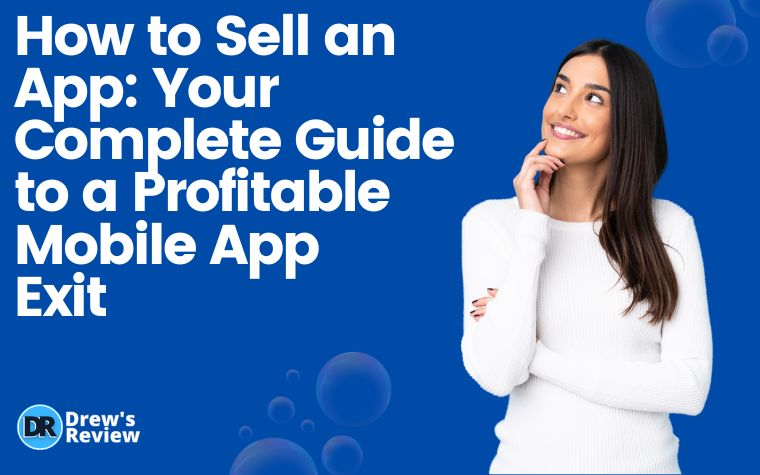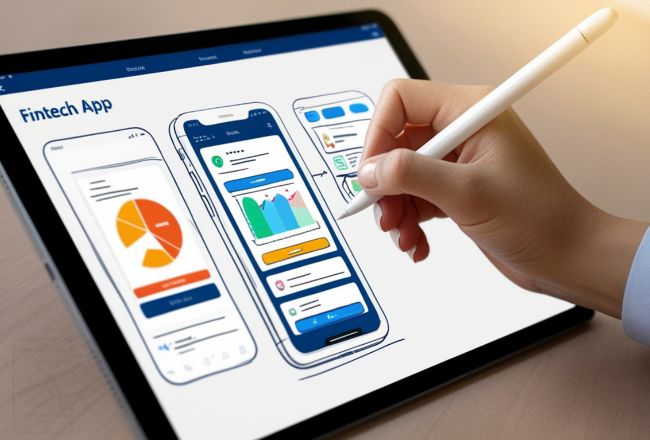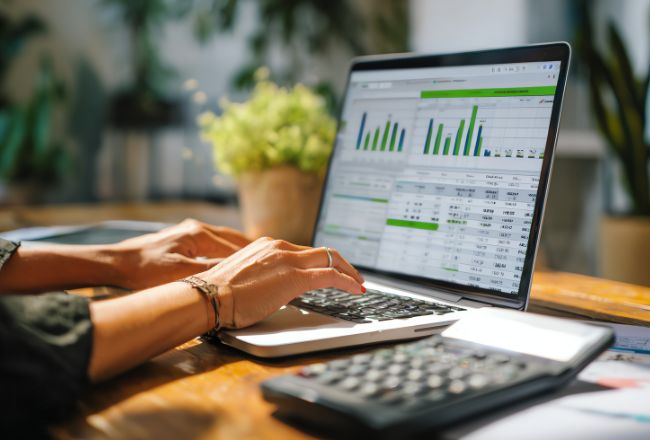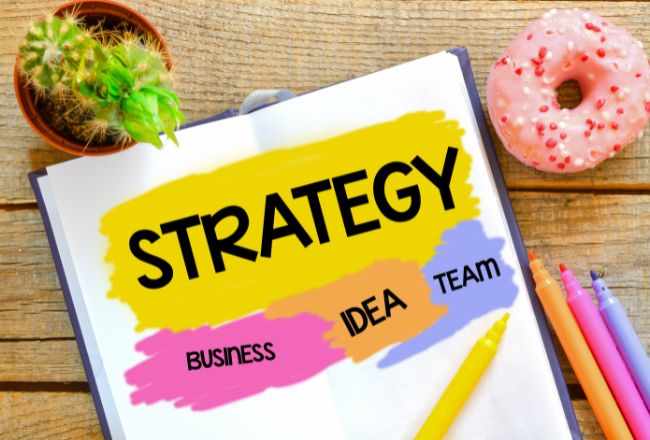
Selling a mobile app isn’t something most developers plan for when they start building. You launch an idea, it gains traction, revenue starts coming in—then at some point you realize the app has reached its peak, demands too much of your time, or no longer aligns with where you want to go next. That’s when selling stops being an emotional decision and becomes a smart business move.
The truth is, selling apps has become its own ecosystem. Investors, publishers, and full-fledged acquisition firms now buy apps the same way people buy rental properties—looking for stable returns, strong metrics, and long-term upside. If your app checks even a few of those boxes, you’re sitting on a valuable digital asset whether you realize it or not.
This guide will walk you through what buyers look for, how valuations actually work, and what the process of selling an app looks like from start to finish—without drowning you in checklists or overwhelming jargon.
Why Selling Your App Is Often the Smartest Move You Can Make
Most app exits don’t happen because something went wrong—they happen because something changed. Maybe the app hit a revenue plateau. Maybe you’re burned out from updates and support. Or maybe you simply want capital for your next project.
A lot of developers don’t know this, but apps typically sell for 24–48x their monthly net profit. So if your app earns $3,000/month, that’s a potential $72,000–$144,000 payday. For many entrepreneurs, that lump sum opens the door to entirely new opportunities—whether that means finally launching the business you always wanted (you can see my full breakdown on how to start an online business) or focusing on a project with higher long-term upside.
The key is timing. Buyers pay the highest multiples when an app is stable or showing even modest growth. Waiting until revenue dips usually means leaving money on the table.
Where Apps Actually Sell (And Why the Platform Matters)

You can’t sell an app just anywhere. The marketplace you choose shapes your selling experience and the type of buyers you attract.
Many developers list on marketplaces simply because it’s the most straightforward option. Platforms like AppWill specialize exclusively in mobile apps and games, and because they’re built around verified listings and secure escrow, you get a safer, more controlled environment. If you want to see how the market looks or compare pricing, their marketplace of apps for sale is one of the easiest ways to benchmark your app against real listings.
Larger general marketplaces like Flippa offer more exposure, though the buyer quality varies. On the higher end, curated platforms such as Empire Flippers or Acquire.com bring in more serious investors, but you’ll also face stricter vetting.
There’s also the direct-buyer route—selling privately to a publisher or company that sees strategic value in what you built. These deals usually take longer and involve deeper due diligence, but the valuations can be significantly higher when there’s a clear fit.
And finally, some developers skip marketplaces entirely and sell to aggregators—companies that buy apps outright. Deals close quickly here, though usually for slightly lower multiples.
How Buyers Value an App (The Numbers That Matter)
Buyers don’t guess at valuations. They use simple, predictable formulas. The most common is:
24–48x monthly net profit
Net profit is the real number—not your revenue screenshots. Buyers look at what the app earns after App Store fees, server costs, paid user acquisition, support tools, and anything else required to keep the business running.
If your app earns:
- $10,000/month revenue
- $5,500/month true net profit
…buyers look at $5,500, not $10,000.
From there, they determine where you fall on the multiple scale. Apps with stable or growing metrics can hit the high end. Apps with declining revenue usually stay on the low end. Subscription apps, strong retention, clean codebases, and low support overhead tend to command better offers.
One thing buyers care about almost as much as profit: your trendline. A steady six-month upward trend is far more valuable than a single spike.
Metrics Buyers Will Dig Into

Even if your app is profitable, buyers want to know why. That means examining retention, engagement, and how efficiently you acquire users.
DAU/MAU gives them a sense of daily vs monthly engagement. Retention (especially Day 1, Day 7, and Day 30) tells them whether you have product–market fit. Revenue per user (ARPU), lifetime value (LTV), and your customer acquisition cost (CAC) confirm whether your growth is sustainable.
If your app relies heavily on organic traffic, buyers will want to know what’s driving it. App Store Optimization works a lot like SEO. If you understand keyword targeting, user behavior, and how to show up in search results, you already understand the basics—if you don’t, my guide on what is SEO breaks down the fundamentals in simple terms.
The bottom line: metrics tell the story. Buyers aren’t just buying what your app is today—they’re buying what they believe it can become.
What You Need to Prepare Before Listing
Selling an app is like selling a house—you get better offers when everything is clean, documented, and easy for the next owner to manage.
Financial documentation comes first: revenue, expenses, net profit, and at least 6–12 months of clean month-by-month numbers. Buyers want to verify your claims, so expect to provide dashboard access or verified exports from Apple, Google, Stripe, or your ad networks.
Next is your analytics documentation. Cohort retention, acquisition channels, geo breakdowns, and engagement data help buyers understand user behavior and long-term potential.
Then there’s your code. Even great apps lose value if the codebase is confusing or undocumented. A clear README with build instructions, environment setup, and known issues goes a long way.
Finally, make sure your legal rights are clean. You need to own (or have licenses for) all code, artwork, audio, and assets. If anything in your app is unlicensed or unclear, buyers will walk immediately.
How the Selling Process Usually Works
Once your app is listed, serious buyers start asking questions. The early conversations are about understanding the app’s history and performance. If they like what they see, the process goes into due diligence—usually 7–14 days.
Expect buyers to ask for:
- Access to dashboards
- Analytics exports
- Code review
- Financial verification
- Clarification on support expectations
The cleaner your documentation is, the faster this goes.
When an offer comes in, it’s normal for buyers to start below your asking price. Counter with rationale—not emotion. Highlight your retention, growth, tech stack, and opportunities they can capitalize on.
Once you agree on terms, the deal moves into escrow. Platforms like AppWill use a structured split release: the buyer deposits 100%, you transfer the app, you receive half, then you transfer code and documentation, and receive the remainder. This protects both parties and keeps everything fair.
iOS transfers are usually more strict due to Apple’s guidelines. Android is more flexible and typically faster. Cross-platform apps tend to command higher valuations because they diversify platform risk.
What Happens After You Sell
One of the most exciting parts of selling an app is deciding what comes next. Some developers immediately start building a new app. Others pivot into AI, SaaS, or ecommerce.
And some take the capital and jump into content creation—especially YouTube, which has become one of the most accessible online income models. If that’s on your radar, my guide on how to make money on YouTube gives you a full breakdown of how creators actually earn.
The point is: selling an app gives you options. It frees both your time and your capital so you can move into something with more potential or more excitement.
If You’re Not Ready for a Full Exit

Not every developer wants to hand over their entire app. Some prefer hybrid approaches. For example, you can license white-label versions of your app to companies, offer revenue-share publishing deals where a partner handles marketing, or negotiate partial asset sales if a buyer wants your codebase but not your brand.
You can also negotiate earn-out structures where you get part of the payment upfront and the rest based on performance milestones. These flexible models are perfect when you still see potential in the app but want to reduce your workload or risk.
Final Thoughts: Is Now the Right Time to Sell?
The app marketplace in 2025 is extremely active. Buyers aren’t just looking for hits—they’re looking for stable, well-built apps they can scale. If your app is profitable or even trending upward, you might be surprised at what buyers are willing to pay.
If you want a smooth, guided experience, marketplaces like AppWill are designed to make the process simple—with valuations, buyer matching, secure escrow, and support throughout the transfer.
With the right preparation and timing, selling your app can be one of the smartest business decisions you make—giving you capital, clarity, and freedom to pursue whatever comes next in your entrepreneurial journey.
- 7 Benefits of Cloud ERP Solutions You Shouldn’t Ignore - December 19, 2025
- 7 Tools That Help Organizations Manage Risk and Employee Data - December 18, 2025
- The Importance of Keeping Your Business Finances in Check - December 18, 2025
